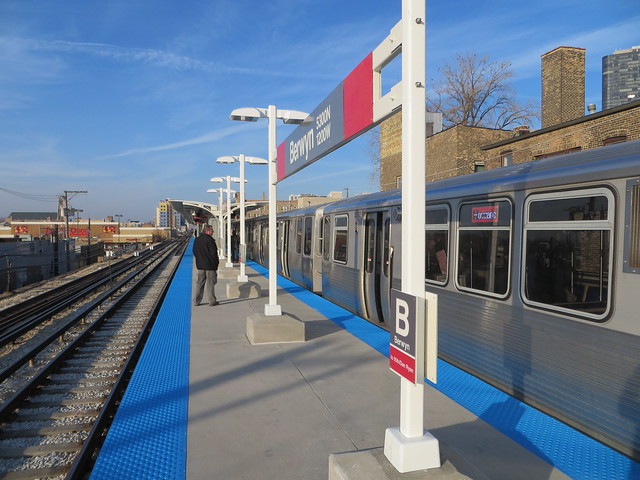
The CTA has announced that the first phase of the Red-Purple Modernization project, which will increase the capacity of the north side's Red and Purple lines, will expand and rehab four stations in Uptown and Edgewater: Lawrence, Argyle, Berwyn, and Bryn Mawr.
Phase One of the project also includes the Red-Purple Bypass project, which will be discussed at a meeting tonight (details). It does not include the Wilson station reconstruction, or the South Side extension of the Red Line to 130th St.
Last night’s open house at Truman College was chiefly about the nearby station reconstructions. Last year, the CTA refurbished the Argyle station through its Station Renewal program, which repainted the station, improved lighting, and deep-cleaned the platforms. But all four stations originally built in the early 1900s share the same problems: the stations are uninviting, and the platforms are too narrow and thus ADA-inaccessible. A CTA representative at the open house said that inaccessibility was the main reason for the station reconstructions.
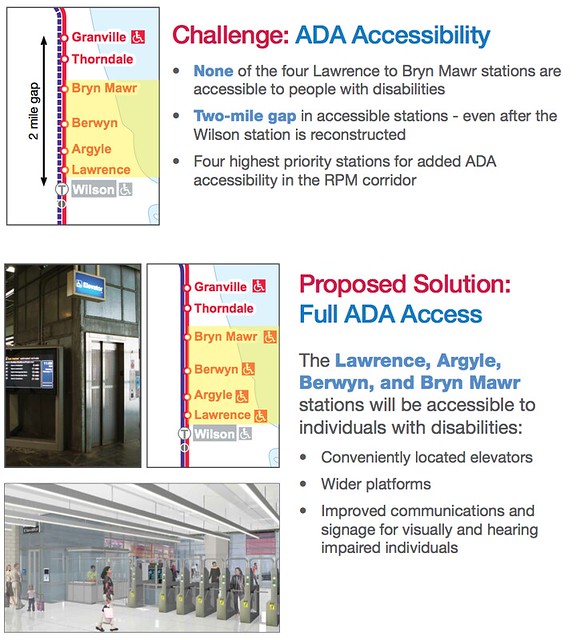
Making all four stations accessible is one great benefit of the station reconstructions, but a less-publicized benefit is capacity improvements. While the Red-Purple Bypass project just north of Belmont has garnered much press and neighborhood scrutiny due to the 16 buildings that must be demolished for its construction, it’s just one piece of a larger project designed to increase the line’s capacity.
The Red line is by far CTA’s busiest line, and passes through some of the country’s densest neighborhoods. CTA says that it must increase capacity by 7,200 passengers per hour – six to nine full trains – by 2030, in order to accommodate growing ridership. The Red-Purple Bypass will help accomplish this by allowing more southbound trains, but it will also be necessary to both lengthen station platforms to accommodate 10-car trains, as well as widen platforms to accommodate more passengers. Today, the longest trains that CTA runs are eight cars long.
Currently, Red line station platforms from Lawrence to Bryn Mawr are just 12 feet wide. Rebuilt stations will have platforms twice as wide, 24 feet, which will accommodate more passengers, safely include elevators, and increase visibility and safety. Widening the platforms will require encroaching on some adjacent buildings, however.
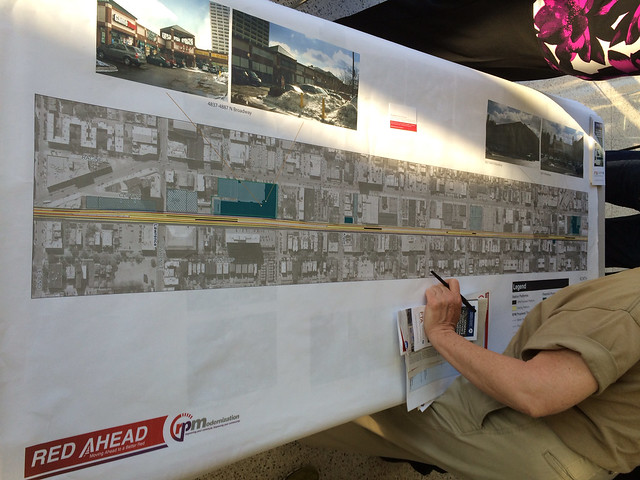
Three buildings and six lots have been identified as obstacles to wider station platforms: 4837-4387 N Broadway, currently the site of a strip mall; 5637-5643 N Broadway, a Public Storage building; and 5657 N Broadway, a Toyota dealership. CTA intends to purchase these buildings and lots, relocate the businesses occupying them in order to expand stations, then later re-sell the lots.
CTA took this opportunity to point out that the lots could be redeveloped as Transit-Oriented Development. In the case of 4837-4387 N Broadway, a strip mall, a more pedestrian-friendly design would be mandated as it lies within a P-street designation that Alderman James Cappleman's office is reinstating after repealing it last fall. Cappleman's office confirmed that the ordinance text is being drafted now, and should be voted on at the next city council meeting. The lots left empty after the Brown line capacity expansion project from 2006-2008 have attracted more transit-friendly development proposals, and this project for the Red line could similarly spur transit-friendly design.
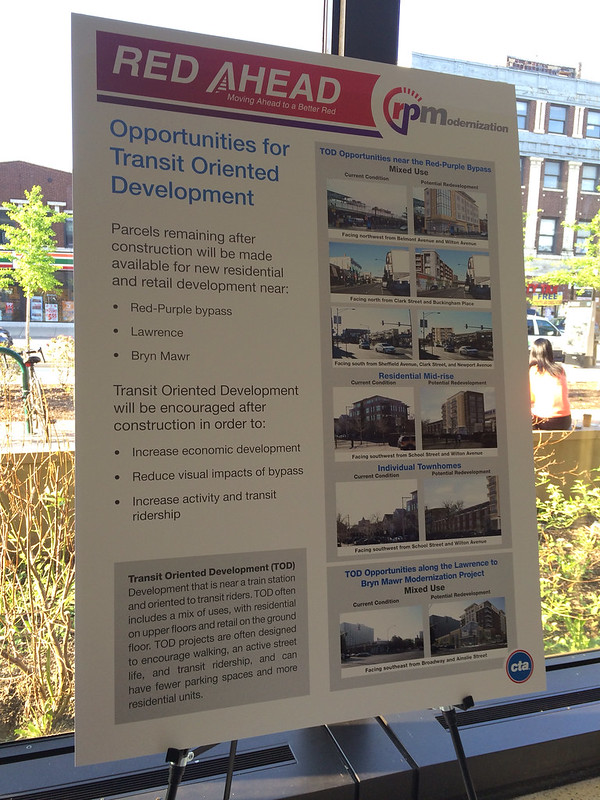
Where station expansion and minor track shifting does not impact existing buildings, CTA will use “alley spanning” to build track out and over the alley. The same was done for the Belmont station reconstruction. Because the track from Leland north to Howard and beyond currently lies on an earthen embankment that cannot support the new track, all current design scenarios for the project assume the embankment will no longer be used to support the track. Alternatives include demolishing the embankment building a concrete bridge structure instead, or retaining the embankment while adding concrete supports on the sides. Both options are still on the table, because this is still early in the Environmental Assessment period.
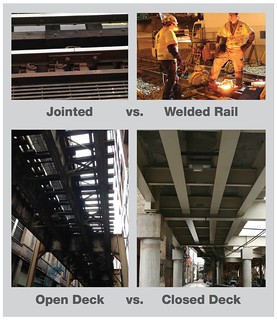
CTA is seeking public input on how removing the embankment could affect the streetscape below. Emphasis was placed on how the different alternatives would buffer noise. Noise-reducing options include adding concrete retaining walls, welding the rails together (which reduces the "clickety-clack" sound of train wheels as they pass over gaps between rail sections), and using a “closed deck” solid concrete platform like the ones at Belmont and Fullerton stations, as opposed to the “open deck” like at most other stations – including the ones in the Loop.
Furthermore, if the embankment is removed, it could open up ground space below that some attendees thought could become parking. While the project is still in the EA phase, public comment is welcome on the project – including what you think should go under the tracks should the embankment go.
Modernizing these stations and rails will create safer stations, give the Red Line the necessary additional capacity to accommodate growing ridership, opens up opportunities for new walkable development, and will speed up service along one of the country's busiest rail corridors. In conjunction with the bypass near Belmont, the projected $1.7 billion project will benefit all Red and Purple line passengers. Construction should begin no earlier than 2017.




